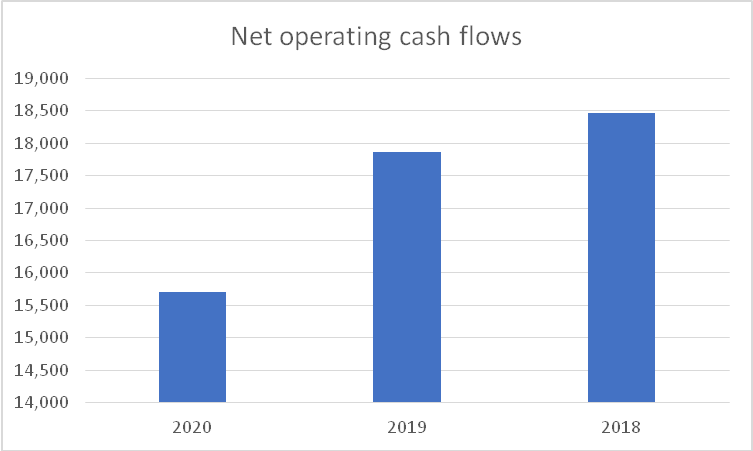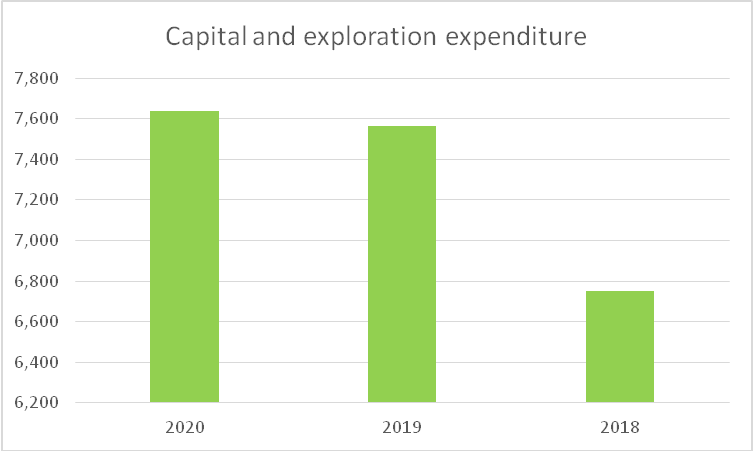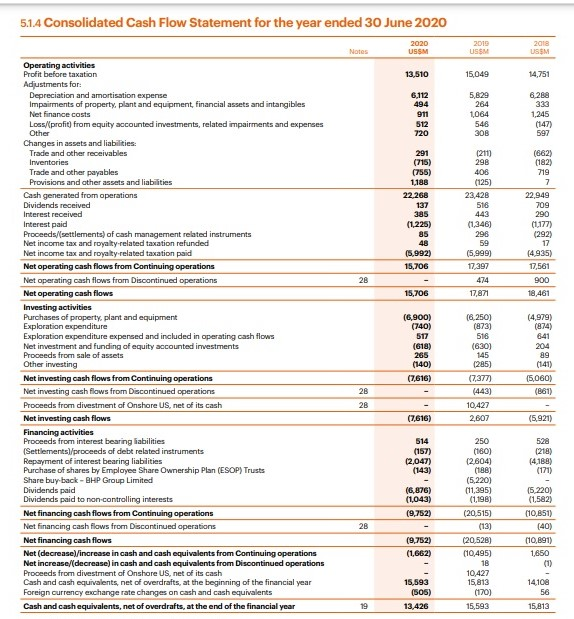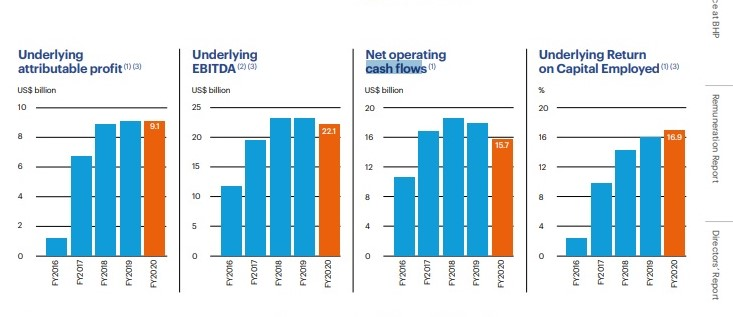Financial Analysis Assignment Analysing The Financial & Non-Financial Activities Of BHP group
Question
Task: Financial Analysis Assignment Task: Your team is requested to advise a well-diversified high net-worth in-dividual who is interested in investing in shares with a fundamental value greater than the share price. As a financial analyst, you are required to write a detailed recommendation report on whether to invest in the selected company.
The report shall be structured in 5 Sections (preceded by a brief executive summary) to address the following questions of your client:
1. What are the competitive forces behind the industry’s structure How does competition affect the margins of the industry and the company How does the company’s profitability compare relatively to its peers (you should select between 3 and 5 industry peers) What is the firm’s business strategy Please highlight potential investment risks the company could face in the future;
2. Analyse how the market is pricing the firm using different relative (or market) valuation techniques. Please use the same group of industry peers identified in the previous section; 3. Estimate carefully the cost of debt, cost of equity and cost of capital for this company;
4. Estimate the free cash flows of the company;
5. Estimate the target price of the company, issue a buy/hold/sell recommendation to your client, and draw your conclusion.
Answer
Executive Summary
The report on financial analysis assignment discusses the various aspects of the current and future prospective position of the group. The report is based on the overall analysis of the BHP group's financial and non-financial activities. The various competitors of the company and their impact on the profitability and future prospects of the company are evaluated. The various cost of financing or funding of the company is also considered as the profit is distributed and available to the final equity shareholders after paying all the other sources of finance of the company. The expected valuation of the BHP Limited is ascertained and, accordingly, the price of the equity shares of the company that should be paid by the prospective investors of the company. The scope of investing in the company can be reasonably concluded based on past trends and future prospects, though the actual result may differ based on the changing circumstances.
1. Competitive Forces
BHP Limited is dealing with the extraction and production of minerals like iron ore, copper, uranium, metallurgical coal, etc. The business in which the company belongs has high demand and will continue and increase over time, but the number of resources from which the product can be done is limited; but with continues research and development, new opportunities and areas are targeted and rights over the same needs to be established to start the work (BHP Limited 2020). The big giants all over the world are also in a similar business, and thus the company is always in a very challenging situation to continuously acquire new operational areas and also continue work in the existing sites so that the company is benefited to the maximum extent and harm to the environment and company personals are minimum, leading to the sustainable growth of the company in the long run (Tosun 2019). There are many competitors of the company all over the world in various segments like Rio Tinto Group, Glencore Plc, Cloud Peak Energy Inc, etc (BHP Limited 2020).
The company is currently focusing more on nickel and copper-based on the recently increasing demand and also the company having a competitive advantage over the same. The company is also focusing on the premium products in its coal segment to provide the steelmakers with high-quality coking coal to improve its product quality and also reducing the emission levels (BHP Limited 2020). The company is also continuously seeking and entering into the contractual relationship as well as joint ventures to manage the large-scale operations over different geographical areas. In the oil and gas segment, the company is investing in a very resilient manner keeping its price range as well as its strength in the same. Since this is a huge segment, working on the same is required a very systematic approach by grabbing maximum opportunities and generating the benefits from the same. The company is following the strategy to provide the value for its various stakeholders in the form of effectively managing its value for money, the risk associated with it, and the return received from the investments. The company has the best of the industrial practices with good corporate governance. The company is in a continuous endeavor to advance in the field of technology in all aspects of the business areas. The competition for technological advancement is increasing, and the better technology required investment at various stages but provides benefits for the future and maintains the comparative advantage by reducing the cost incurred in production (Hitchner 2016). To face the competition, the company is working for the wellbeing of its people and providing an inclusive and diverse culture.
The company is a leading mining company and thus is having an advantage over other companies and many times is the price setter. The company has kept its price competitive so that the other competitors do not overcome or capture the market of the company. The company is having an increasing profit over the years since 2016 but has seen some downfall for the year 2020. The increasing revenue over the years has resulted in increased earnings per share, and thus returns to the shareholders are also increasing over the years. The similar company Glencore has reported the profit at a reduced figure by more than 50% from 2018 in the year ended 2019. The other company Cloud Peak Energy is also having moderate-income over the years. The major competitor of the company, Rio Tinto, was also reporting increasing profitability over the years since 2015, but during the year 2019, the profits reducing by around 50%. Thus, the company is having profitability better than most of its competitors, and this will encourage the stakeholders by boosting their confidence in the company (Shuli 2011). The margins of the company are above average as compared to the industry based on the lower cost of operations. The other competitors except the Rio Tinto are having average margins and Rio Tinto is also having margins higher than the industrial average but lower than the BHP group. The company is able to make higher margins through better pricing policy due to high quality materials being supplied. The margin in the industry are impacted more by the other factors like climate change leading to increase in degradation of the resources available like petroleum natural field decline, higher coal strip ratios, etc.
The company is in a business that is not predictable, and thus various known and unknown risks are associated with the company. The company has simplified the risk management technique to tackle and reduce the risk level associated with the operations. It tackles the risk by 4 step management process like having a proper risk strategy that is taking a calculated risk at the right time and in the right way. To tackle it, proper risk governance is done by focusing the right people on the right things so that the corrective actions, if required, can be taken on a timely basis (Vernimmen 2017). Corporate governance is the need of the hour, and by using the corporate governance practices, it can keep a hold on the governance mechanism that can steer the business. The long-run experience of the management and long history of the company also provides risk intelligence to the company, thus having good insight into risk knowledge and how to overcome most unfavorable situations. The risk process is done in such a manner that the right tool is used for the jobs so that the chances are reduced for any adverse situation to take place. Risk management is an imperative that helps the company to tame the risk profile of the company by providing relevant support (Peirson et al 2015)
2. Relative Market valuation
All the competitors are listed on the stock exchange, and its valuation is calculated at the Equity Method. BHP Limited is having the P/E ratio of 16.5 times that the shareholders are ready to pay the company 16.5 times higher than its earnings per share. This figure shows the confidence and good future prospects that the company has and as expected by the shareholders. The P/E ratio of Rio Tinto is around 15.5 times, which is lower than the company. The P/E ratio of Glencore is coming negative recently as due to negative earnings but earlier for the period December 2015 to 2019 averaged 37.3 times. The same is in the case of Cloud Peak Energy due to negative income the P/E ratio cannot be determined. The company Glencore is also having the beta (5 year monthly) of 1.41 times, Rio Tinto 0.62 times, Cloud Peak Energy 0.78 times and BHP group 0.98 times. Thus, the equity shareholders are very positive about the future growth of the company and expect the revenue will increase in the future, keeping in view the higher capital expenditure being done by the company in the high profitability projects and expecting to have higher operating cash flows. The valuation of the company depends upon past trends, and future expects, which are available through various published and unpublished price sensitive information (Carlon 2019).
3. Capital structure
Capital structure plays a vital role in identifying the ownership of the company, how much is the company leverage.
Cost of debt: Apart from shareholders holding the company raise fund from long term finance
The cost of equity is the return to the shareholders in the form of Earning per share & dividend.
As per the past terms, we can see that Earning per share in the year 2019 was US cents 166.9, and in the year 2020 is US cents157.3 per share, so we estimate that we expect that in the year 2021 will be US cents 160 per share (BHP Limited 2020). Capital structure is the mix of debt and equity, and its capital structure comprises both the component. Here as per past trends, we can see that the source of funding has drastically increased and is from the debts of the company, so there is a simultaneous increase in the finance cost of the company (Davydov 2016).
The Interest-bearing debt in the year 2020 is the US $ 27,138 million, whereas, in the year 2019, it was US $ 24,828 million. Therefore, there is an increase of debt amounting to the US $2,310 million, but here we can see that there is a decrease in the finance cost due to lowering by interest rate and less utilization of Overdraft facilities (BHP Limited 2020).
So the cost of debt in the year 2020 is 4.14%, which was 4.96% in the year 2019 and 4.24% in the year 2018.
Cost of equity in the year 2020 is as per Gordon method:
Dividend in year 2020 is US$1.20 per share and Market price is US$ 37 per share
Therefore, Cost of Equity is= Dividend
Market price
Therefore cost of Equity is= (1.2/37)*100= 3.24%
Cost of debt in the year 2020 is 3.24%
Capital structure is the combination of Equity and debt there the Equity is US$ 47,926 million and debt is US$ 22,036 million Therefore weighted average of equity is 68.5% and that of debt is 31.5%
4. Free cash flow
Expected Free Cash flow: Free cash flow means cash flow from operation less Capital expenditure.
As per the annual report of BHP Limited, the past trends show that the free cash flow is decreasing because the capital expenditure is increasing. This means that the company is making a capital investment in the business, which will generate cash flows in the future. Moreover, we can see the past trends of the Net operating cash flow are illustrated in the graph below. Were the Net operating profit is reducing from the year 2018 to 2019 and in a sharp reduction in the year 2020.

(BHP 2020)
Similarly, past trends of Capital and exploration expenditure is also illustrated in the chart below. It is clearly evident that the company is increasing its capital expenditure on year to year basis.

(BHP 2020)
Considering the past trends of both Net operating profit and Capital expenditure on similar line, so it is expected that net operating profit will decrease by 10% as compared with year 2020 whereas the capital expenditure will increase by 20% from year 2020
So expected Net operating profit in year 2021 will be 15706*90%= 14135
Capital expenditure= 7640*120%=9168
|
Particulars |
US $ in million |
US $ in million |
|
Net operating cash flow |
|
14,135 |
|
Less :Capital Expenditure |
|
9,168 |
|
Expected Free Cash flows |
|
4,967 |
For the above we can see that the expected free cash flow is US $4,967
5. Target price
BHP Limited target price as per book value is US cents 160 per share, so the client should not pay more than US cents 160 per share. The target price can be defined as the price where the stock is fairly valued with respect to the historical and projected earnings. Investors can maximize the rate of return by purchasing and selling stock when it hits below and above the target price (Deegan 2016). For acquisition, the main is the fundamental of the company, and it's financial, and both is good in this company so, and an investor may acquire the share of the company, and in case of acquisition of the company than both the market value and book, the value needs to be considered along with various other factors. Currently, the company is thinking of its future and moving towards the objective of the company. The company's net profit has increased as compared to past trends. The earning per share, which was negative in the year 2016 by US$ (120) now in the year 2020 is the US $ 157, which indicate the strong fundamental of the company and the better decision of the company.
Seeing the company's past trends and growth, we can say that it's worth investing now. The past trend of the company clearly indicates that the company has strong fundamentals and is a potential buy at the current juncture (Morecroft 2015).
Conclusion
The future expects of the company is very promising and if every thing works well than the future operations will increase. BHP Billiton is continuously increasing its capital and exploration expenditure and for this expenditure they are sourcing the fund by increasing debt of the company. Any company with high leverage means its finance cost will increase and this will reduce the Net Profit of the company. Alternatively, Company can source the fund by raising share capital but the cost of equity is higher than the cost of debt so the company is funding its expenditure from cost of debt. Moreover, the capital structure can be defined as a mixture of equity and debt. The division between equity and debt provides an opportunity for the company to grow and ensure better performance. The investing scope can be based upon the trend of the past and the prospect in the future; however, the actual result might be based upon the changing scenario. Moreover, the risk factor and intelligence an ultimate edge in terms of risk knowledge and how to tame the unfavourable situation. The correct tool is vital needed when it comes to tackling any adverse situation.
References
BHP Limited. (2020). BHP Limited 2020 annual report and accounts. Retrieved from: https://www.bhp.com/-/media/documents/investors/annual-reports/2020/200915_bhpannualreport2020.pdf
Carlon, S. (2019). Financial accounting: reporting, analysis and decision making. 6th ed. Milton, QLD John Wiley and Sons Australia, Ltd
Davydov, D. (2016). Debt structure and corporate performance in emerging markets. Research in International Business and Finance, 38, 299-311.
Deegan, C. M. (2016). Financial accounting. Financial analysis assignment McGraw-Hill Education.
Hitchner, J. R. (2016). Financial valuation. Somerset: John Wiley & Sons
Morecroft, JD. (2015). Strategic modelling and business dynamics: A feedback systems approach. John Wiley & Sons, Hoboken, Peirson, G, Brown, R., Easton, S, Howard, P. & Pinder, S. (2015). Finance, 12th ed. North Ryde: McGraw-Hill Australia.
Shuli, I. (2011). Earnings management and the quality of the financial reporting. Perspective of Innovation in Economics and Buisness (PIEB), 8(2), 45- 48.
Tosun, O. (2019). Why do large shareholders adopt a short-term versus a long-term investment horizon in different firms Financial Review, 53(4), 763-800.
Vernimmen, P. (2017). Corporate finance : theory and practice. Hoboken: Wiley.
Appendix















